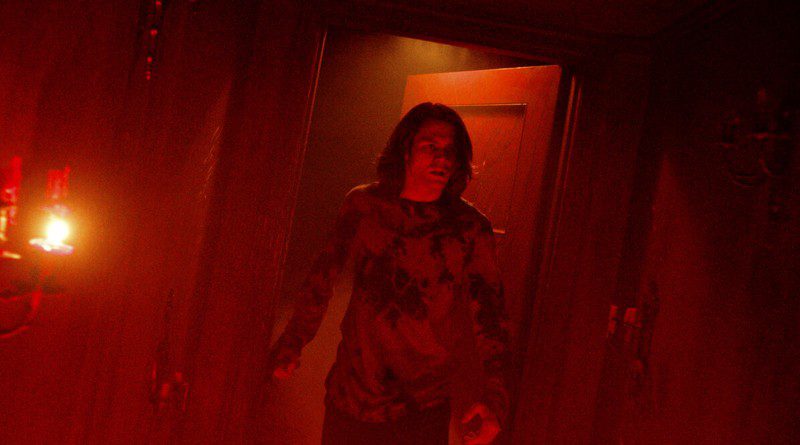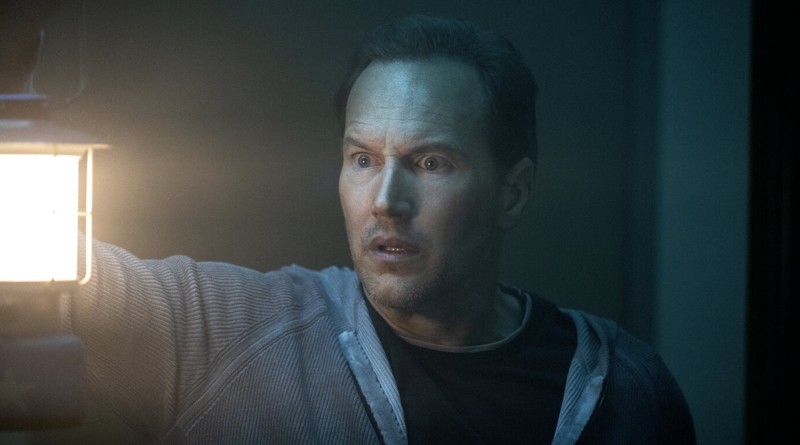Insidious: The Red Door (2023) Review
Nearly ten years have passed since the last Insidious movie — Insidious: Chapter 2 — gave us the story revolving around the cursed Lambert family. The fifth instalment, Insidious: The Red Door marks the return of the same family after the previous two prequels took a detour to focus on Lin Shaye’s Elise Rainier.
So, is it worth the wait after all these years? Before I get to the review, let’s dive into the story first. After the traumatic events of Insidious: Chapter 2, Josh (Patrick Wilson) and Renai (Rose Byrne) have divorced. Their children are all grown up but the movie focuses predominantly on the now-teenage Dalton (Ty Simpkins), who still resented his father. They barely communicate with each other. Even on the day when Josh drives him to the university, where Dalton will be studying art, they hardly have a meaningful conversation throughout the journey.
From here, the movie tries to explore the strained father-son relationship between Josh and Dalton. But Patrick Wilson, who also doubled as a director for the first time, lacks the dramatic flair to make the story work in his favour. Everything here is morose and emotionally hollow that it’s hard for me to root for whatever family conflict Josh and Dalton have been through. It also doesn’t help when Ty Simpkins’s supporting turn as Dalton comes across as dull and insipid. I get that his character is supposed to be brooding and acrimonious. And yet, he looks like one of those emo teenagers who’s trying too hard to make an impression. I find it rather funny, considering Simpkins during his tween age when he acted in the first two Insidious movies, was more promising as a child actor.

Despite having Wilson back in the fold, his character is mostly reduced in favour of diverting the attention more to Simpkins’ Dalton. The movie does attempt something different in the franchise: a teen drama with some of the familiar tropes intact. This includes Dalton’s adjustment in the university sharing a dorm with a student (Sinclair Daniel’s Chris Winslow) and his subsequent awkward friendship with her. There’s a whole scene about attending a frat party and has a subplot revolving around the death of a character. But it’s mostly disjointed stuff since it looks more like a perfunctory filler and an excuse to pump up some obligatory jump scares.
Speaking of jump scares, you will find plenty of them here. But unlike the ones masterfully crafted by James Wan in the first two movies, the scares are more predictable. Except for one or two effective moments, notably the dread-inducing MRI scene where Josh seemingly finds himself trapped in a large, dark tube. Wilson also does a good job in the pre-credit opening sequence, utilising the cinematic art of immobile framing that combines mostly silence and deliberate tension-building set piece.
Too bad such praiseworthy scenes are very few and far between. The first half of the movie spends too much time on the buildup of Dalton’s gradual encounter with his familiar nightmares following an art class, which somehow liberates his repressed memory. A memory that was previously stifled by Carl (Steve Coulter), the psychic medium responsible for making Dalton and Josh “forget” about their dark pasts at the end of Insidious: Chapter 2. But it gets strangely monotonous instead of a journey that would generate a genuine sense of creeping tension. Given the fact this is supposed to be the final saga of the Lambert family in the Insidious franchise, I would naturally expect more than just a flimsy attempt to take us back to the astral projection of The Further.
Even by the time the payoff arrives, it’s all too late with the anti-climatic third act that feels like a total cop-out. Let’s just say the eventual appearance of Lipstick-Face Demon (Joseph Bishara) does little to justify his return other than mere fan service. Wilson also tries to incorporate the familiar idiom of “face your demon” both literally and figuratively. But instead of visualising it in a more thrilling manner, what we got here is an unexpectedly subdued conclusion of the Lambert family arc.





